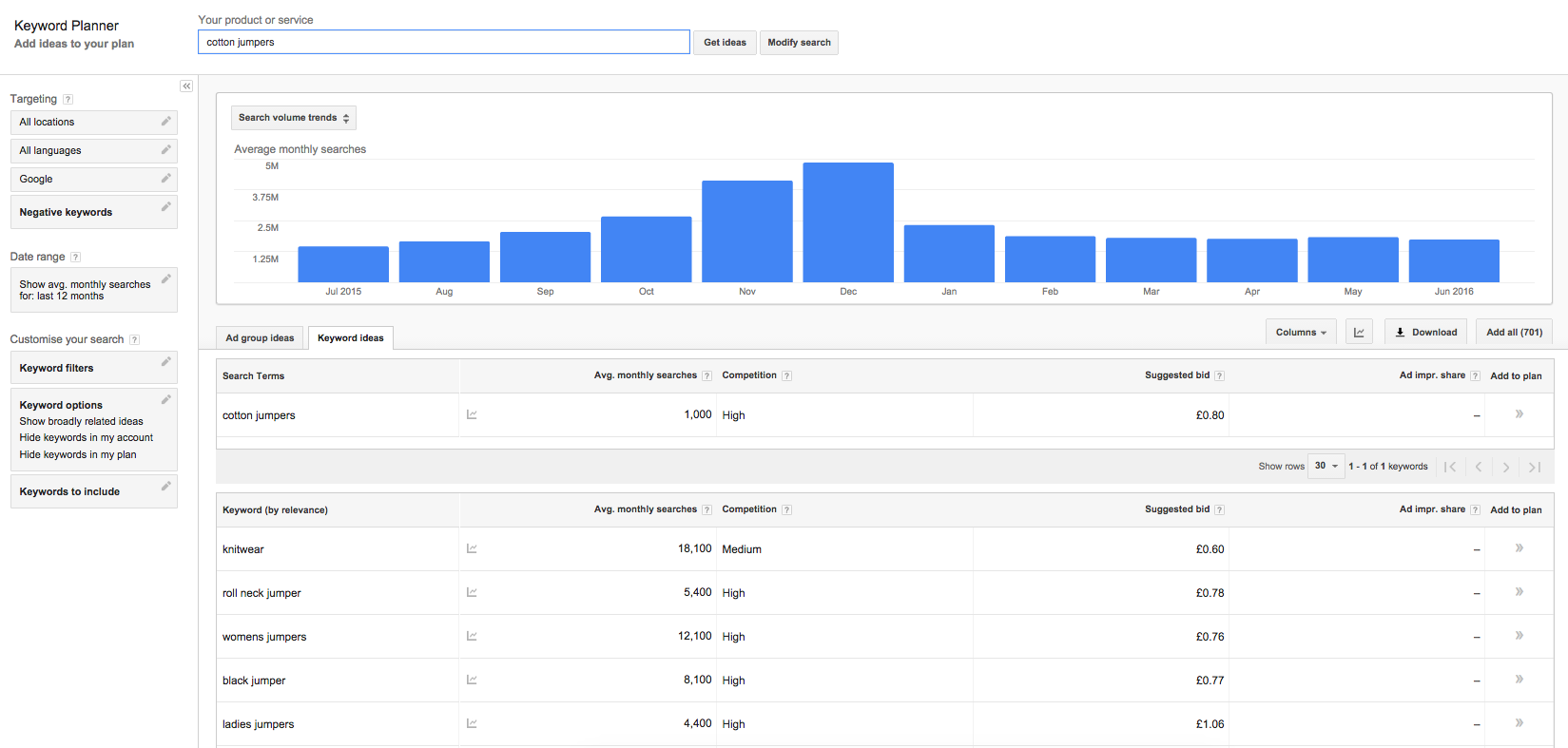 The Value-Adding Checklist for Your Website
The Value-Adding Checklist for Your Website
The arduous task of getting your website live is now complete. Now comes the hard part; getting the visitors you want onto your site. In this article, I will walk you through how we would recommend you approach your SEO strategy and the steps that should be taken to ensure a website is well optimised.
Google Analytics
In a nutshell, Google Analytics (or ‘GA’) tracks visitors to your website and the ability to track and analyse the following data:
- Number of visitors
- Your most popular pages
- Average time users spend on your site
- Sources of traffic (Search Engines, Social Media, Direct etc)
- Conversion rates
- Event tracking
- … and much more
Naturally, the earlier you start tracking this data, the better. It will provide you with a solid benchmark on which to build your website’s KPIs, whether they be related to traffic, conversions or engagement.
Search Console (formerly Webmaster Tools)
The interfaces and dashboards on Search Console are minimalistic but provide data and information that is crucial to ensuring Google is happy with the state of your website.
Below are some of the tool’s abilities:
- Identifies broken URLs/pages
- Highlights any crawl and DNS errors
- Allows you to ‘fetch as google’ to test how Google’s crawlers see/render your site
- Provides the ability to manually upload a sitemap for faster controlled indexing
- Allows you to upload ‘disavow’ files which help to remove associations with detrimental websites that link to you
Search Console can be easily associated with your website via your Google Analytics account if they are owned by the same user email address.
Post Launch Checklist
We always run any new site through a trusted list of the most common issues which arise when a site is launched. The list focus is mainly around accessibility and making sure that Google can get to the parts of the site it needs to. You can access the checklist here:

Keyword Research
After you’ve added GA and set up Search Console, the next step is to get your Google AdWords account organised.
One of the most powerful tools on AdWords is the Keyword Planner, this is one you’ll want to make the most of. This tool allows you enter the address of your web page or products/ categories to receive the list of Keywords found within your content.
Below is an example using the product ‘cotton jumpers’:

You’re provided with:
- A graph showing volume of searches by month
- Results for your keyword/s
- Alternative keyword ideas
But what do these columns mean?
- Keyword (by filter) – The relevant keyword
- Average monthly searches – An indication of how many people search for this keyword
- Competition – How many other companies (big or small) are targeting this keyword
- Suggested bid – More for AdWords campaigns, but from an SEO standpoint we can use this to provide an indication of how profitable other companies find this keyword: For example, ‘Sports Car’ has a suggested bid of £5.33 but ‘Toilet Roll’ is just £0.93
So the question then becomes whether or not you need to complete this exercise for all webpages. The short answer to this is no – this process only needs to be run for pages where you want customers to enter your website, also known as ‘Landing Pages’.
Common landing pages may include:
- Home page
- Contact us/Store Locator
- Product Category
- Service Page
- Specifically Designed Landing Page
With regard to more specific pages such as product pages you typically find that products change all the time, they get replaced by newer models and better designs, they also fall out of stock – often leaving users directed to dead end pages. Typically, a well designed category page doesn’t suffer from such problems.
Keyword Allocation
So, you have your benchmarks confirmed, tracking set up and a huge pool of keywords, the common assumption is that all of your webpages should be attractive to all of your keywords. This is where you need to think again.
Let’s take the example of a basic clothing brand, the company is called ‘Jane Doe’.
They have 3 landing pages where they would like to focus their traffic and set up some keywords: HOME – MENSWEAR – SUMMER DRESSES.
Below is a breakdown showing how the keyword allocation may look for such a website.
HOME
Jane Doe clothing
Jane Doe
Jane Doe online
Jane Doe clothes
MENSWEAR
Menswear
Mens clothing
Male clothing
Jane Doe menswear
Online mens clothing
Male fashion
SUMMER DRESSES
Jane Doe dresses
Summer dresses
Cotton dresses
Light summer dresses
Jane Doe summer dresses
As you can see, the further into the site you get with sub categories the more specific you should become with your keywords.
Page Titles
Finally, with everything in place, ensure your on-page content reflects the keywords you are targeting. This easiest way to do this is to ensure your header tags (H1, H2 and H3) appear in that order on your page and provide useful information to Google with regards to what your page is about.
- If you have a H1 try to include the keyword/s without it looking spammy
- Good: “Beautiful Summer Dresses from Jane Doe”
- Bad: “Summer Dresses, Cotton Dresses, Dress, Cheap Dresses”
- If you have body copy (text) drop the odd keyword in there
- Don’t feel all headers need your keyword/s to be of use

No comments:
Post a Comment